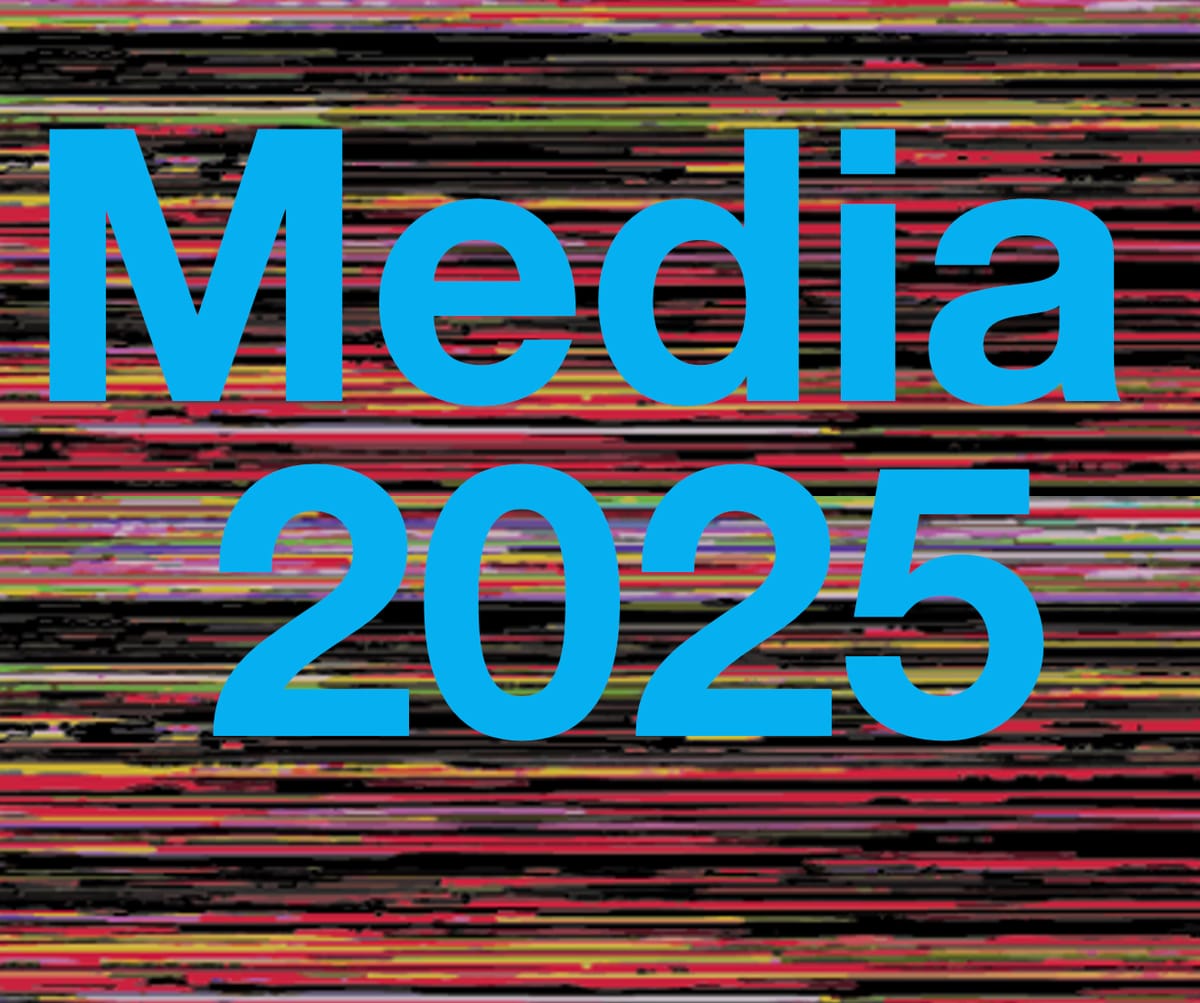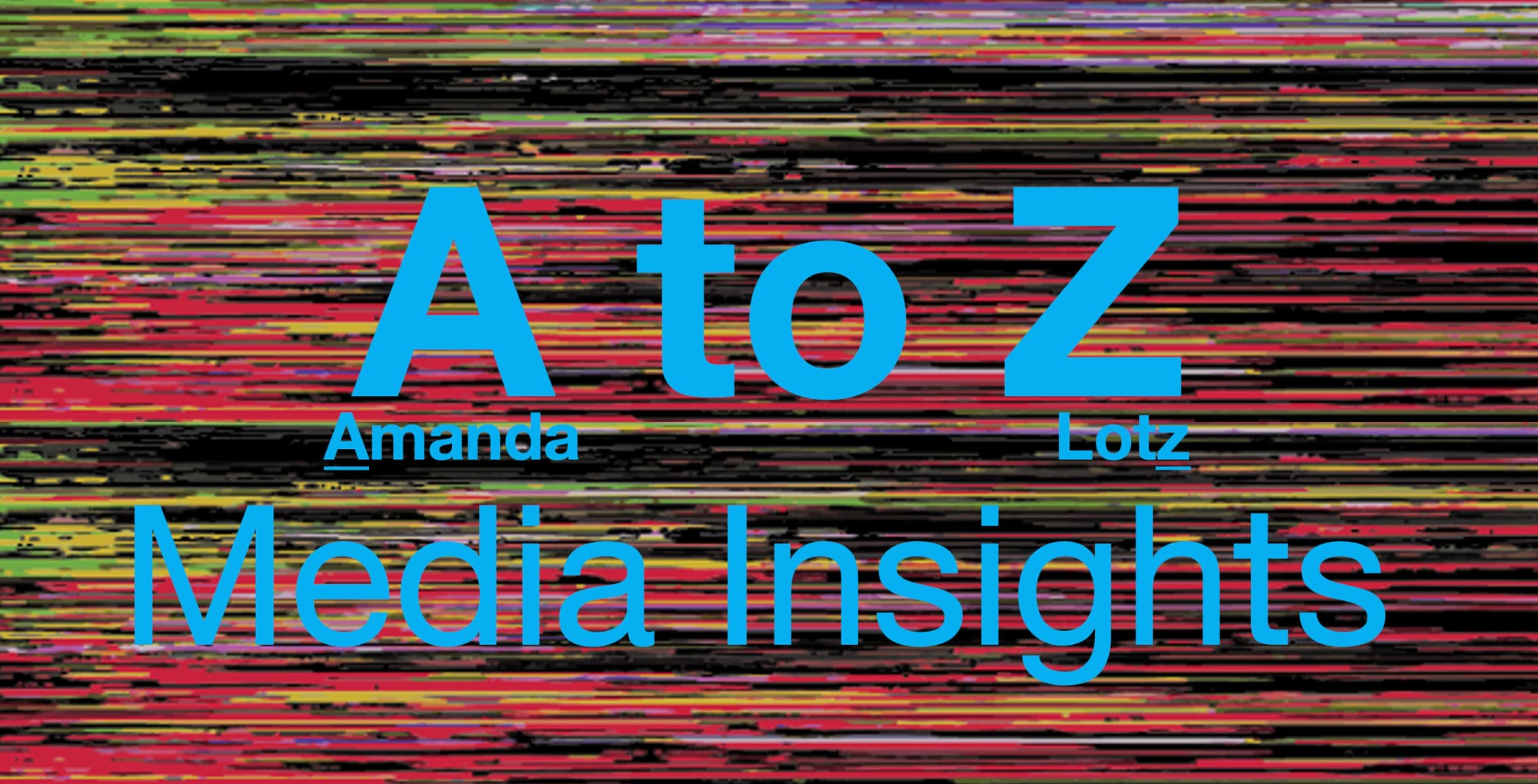Introduction – Using media in 2025
Click on and read Media 2025 Explainer first

Read Media 2025 Explainer first
My life straddles the turn of century, which means I’ve lived roughly half my life in each the predigital and digital eras. I regard my knowledge and lived experience of the predigital era as my superpower when it comes to understanding media and media businesses today. Of course many with much more power and profile also have this superpower, but I can be detached from it all. I was just a media user and student of media industry operation in the twentieth century, not someone receiving the spoils of an uncommonly profitable sector. I use my superpowers for understanding.
Let’s begin by remembering the lived experience of predigital media. In the late 1990s, I received a daily newspaper, the Austin-American Statesman. I’d skim it in full over breakfast but honestly read little. I was in a new city and living on a meager grad school stipend and mostly read to find out about things going on and where to find good deals on things I needed. My big media splurge was a Broadcasting & Cable subscription, which I forced myself to read cover-to-cover to build my understanding of the business of television. I also subscribed to Entertainment Weekly and Cooking Light, which were cheap and interesting to me.
My evening viewing was carefully orchestrated across two TVs with VCRs to archive the shows I was writing about and to make sure I was across ‘everything,’ which was still possible. These were the last days before my first DVR, and I was a PhD student studying television – there was nothing normal about how I watched. Austin was a great radio city; the radio was on whenever I wasn’t reading or writing. I listened to mixtapes when I went running; CDs were a rare splurge; I’m not sure how I missed Napster (not hugely into music, no longer on university supplied internet).
There are many things about that time that are difficult to explain now. How I had to special order the books I needed for research from a local bookstore until an ‘online bookstore’ called Amazon launched in my final years. The various mesh of DirecTV, going to sports bars, and Broadcast.com that I used to watch or listen to my brother’s college football games. The internet was mostly just email for me. There was more to ‘the web’ by then, but not that I needed. I had enough analog access to things of interest relative to the leisure I had available. I would adopt digital media over time – although comparatively slowly – but my relationship to media as a tool for leisure, connection, and information was forged in a predigital era in a way that imprinted permanently on my use.
Beginning this way seeks to humanize media use with details that might be reminiscent for some and seem as unimaginable to those younger as my professors’ tales of writing dissertations on typewriters. The media use of individual humans reminds us of real people getting through daily life and using media for specific personal reasons. This is why a media industry can exist, because its goods do something for or mean something to a base of users.
The daily experience of media has changed extraordinarily for most people in the last 25 years, yet even before its abundance and ever-presence it was a similarly structuring part of life for many. Time spent with media ranked as the third longest activity for many, after work and sleep. For all the change in the media content we can access and how we access it, media use still occupies a considerable number of leisure hours. So much is a paradox of change and continuity.
Media 2025 marks the start of a new agenda of work that brings the knowledge gained from 25 years investigating media industry change in response to digital disruption to research exploring how people use media now. My agenda of use research is different from what drives consulting firms and government surveys. This is deeply qualitative work aimed at understanding the details of why and how people use media – defined broadly in our first interviews as ‘everything you read, listen to, watch, or play.’
This work has been needed for a long time, but it is expensive and time intensive. It has also been ‘too early’ in terms of the state of broad adoption such that: 1) many technologies/services were established widely and ‘normally’ used in a society and 2) those technologies reached a somewhat mature stage in terms of their features and operability. It has been 25 years of fairly constant change across the sector – first for recorded music and then print (early-mid 00s), then the arrival of social media, YouTube, and mobility with smart phones (late 00s), then change for video (mid-late 10s). Now we are in throes of ‘AI’, which is of course being heralded as certain to ‘change everything’, but probably not media use so much. It is a good time to dig into how people use media now.
Media 2025 captures thinking that connects twenty-first century media industry practices and what people are doing with the media available, at least per preliminary insight. It is mostly conceptual, in other words, based on thinking about how the use and the role of media in daily life can change because of technological and industrial change. I read a lot – work by industry (Evan Shapiro’s Media War and Peace has shared lots of consumer survey research), other academics (UK Routes to Content; Norway Global Natives) and led survey research about scripted series and movie viewing and interviews about media use more broadly (Australian Screen Stories Viewing Reports: Part 1: Watching Series and Movies in the 21st Century; Part 2: Streaming Behaviour and Content Discovery; Part 3: Viewing Practices; Part 4: Why We Watch What We Watch. To keep this from getting bogged down in detail I don’t ‘show my work’ or go into deep explanations of the many inputs that support this thinking.
Our understandings of media use built in the twentieth century, and the increasingly abundant thought-leadershit hot-takes, lead us to misunderstand what humans are doing and why.
So I’ve gone to ask them – I’m now leading a team with four years of funding from the Australian Research Council to explore media use. That research needs to produce ‘academic outputs’ and new knowledge about the role of media in society. This is a public/industry translation of those and other insights. We’ve already completed 40 hour-long interviews with a recruited sample of Australians 18+; that evidence is also reflected in the pages here. [The 40 interviews are a research collaboration with Dr Gabriela Lunardi. The work beginning in 2025 also includes children’s/teen media expert Professor Anna Potter, news expert A/Prof Stephen Harrington, and international collaborators: Professor Jonathan Gray (UWisconsin) and Professor Sonya Dal Cin (UMichigan)].
Actually talking with people about how they use media has been amazing. Recruiting (rather than relying on volunteers) delivered an incredible range of ‘normal’ people. Normal people don’t work in or think about media the way I – and if you are reading this, probably you – do. I’m very aware of the bubble I live and think in – both a function of my day-to-day in a university around people who study all facets of media and of my construction of a selected stream of media content (BlueSky and LinkedIn) full of people who work in media. Knowing you are in a bubble and getting outside it are two different things, and it is difficult to get outside that bubble. Not a single one of our interviewees had a media diet or patterns of use that reflected mine or people ‘like me’, which is what I suspected.
Our interviews began by asking participants to recount their ‘media diet’; most walked us through their day explaining what they use (‘as soon as I wake up, I reach for my phone’), what they do, and what content they access. We prompted as they talked to fill in gaps. Then we talked about how their media use had changed. That meant comparing predigital diets for some and evolution in social media use for those younger. We then had them screen share (interviews were done on Zoom) their favorite/most used social media service and narrate a typical ‘session’ of use. We concluded by asking if they’d use media and what media they’d use in a variety of scenarios (e.g. if you had two-hours of leisure, to connect). We learned a lot.
The next stages of data gathering involve alternating between in-depth interviews and nationally representative surveys. The research is on Australians (its Research Council is our funder), but most of what we are investigating is likely more broadly applicable. I am American and most expert on the US industry but have researched from Australia since 2019. It is still the case that a lot more data about the US exists, so I move fluidly between these contexts. I have also done a lot of collaboration with experts in many other countries in recent years and am aware of different dynamics in different parts of the globe.
Let me make a couple of definitional notes here:
- My main chronological distinction is between the ‘predigital’ and ‘digital’ eras. The dividing point is roughly 2000.
- ‘Hosted’ media is the most unusual term here. The distinction gets detailed expansion in section 5, but this is a distinction for media that circulate on relatively ‘open’ services such as YouTube, Substack, social media, app stores or any service that distributes content created independently of a paid (commissioned/licensed) agreement, as has been typical of ‘licensed’ media making.



